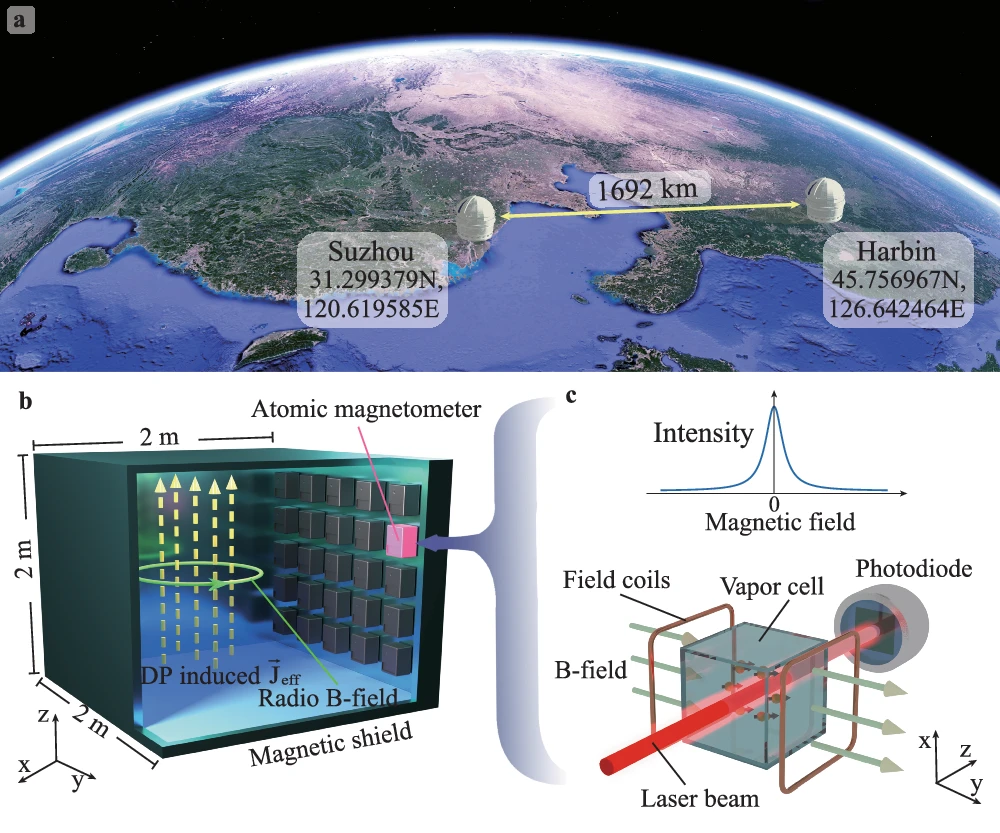Scientists are using atomic magnetometers in the search for dark matter, specifically dark photons. These particles, predicted by theories suggesting extra dimensions, could constitute dark matter. The magnetometers, located in two separate electromagnetically shielded rooms in China, are used to measure the magnetic field radio induced from the dark photons. This method has provided the most stringent constraints from any terrestrial experiments over a specific mass range. The use of a long-baseline network of atomic magnetometers enhances the expected dark photon electromagnetic signals and reduces local noise sources, potentially leading to the direct detection of dark matter.
What is the Significance of Dark Photons in the Search for Dark Matter?
Dark matter, despite being a significant component of the universe, remains elusive to direct detection. Theories abound, suggesting the existence of new fundamental particles beyond the Standard Model that could constitute dark matter. One such theory posits the existence of ultralight bosons, such as axions and dark photons. These particles, when their mass is below Oð1ÞeV, behave like coherent waves with a large occupation number within a given correlation length and time.
The existence of these bosons is naturally predicted within fundamental theories positing extra dimensions. Experimental efforts to detect ultralight bosonic dark matter have primarily focused on axion and axion-like particles, employing inverse Primakoff effects where they convert into photons in a strong magnetic field background. Examples of such experiments include ADMX, CAPP, HAYSTAC, ORGAN, DMR radio, and ABRACADABRA.
Laboratory searches for kinetically mixed dark photon dark matter (DPDM) do not depend on electromagnetic background fields. DPDM can generate resonant cavity modes or magnetic fields in an electromagnetically shielded room through effective oscillating currents. Previous constraints on axion-photon coupling have been reinterpreted into those for DPDM due to their similarities in detection mechanisms.
How are Dark Photons Detected?
DPDM has been searched for using various strategies, including resonant LC circuits, dish antennas, geomagnetic fields, atomic spectroscopy, and radio telescopes. Certain experiments such as FUNK, SuperMAG, and QUALIPHIDE have already set experimental constraints on DPDM. However, DPDM mass constraints below neV mostly rely on astrophysical and cosmological observations such as anomalous heating up of the plasma and distortion of the cosmic microwave background (CMB), both of which are dependent on astrophysical modeling.
In a recent study, researchers demonstrated the first Search for Dark Photons with synchronized Atomic Magnetometer Arrays in Large Shields (AMAILS), which consist of 15 atomic magnetometers. These magnetometers are situated in two separate electromagnetic shielded rooms in Harbin and Suzhou, China, with a distance of about 1700 km between the locations. They are synchronized with the global positioning system (GPS).
What is the Role of Atomic Magnetometers in Detecting Dark Photons?
Atomic magnetometers exhibit an exceptionally high level of sensitivity at the femtotesla level and offer the capability of measuring the magnetic field radio induced from the DPDM in proximity to the wall of the shield room. By correlating the readouts of separated magnetometers in the network, researchers reported the first long-baseline network of quantum sensors searching for DPDM-correlated signals over 1000 km.
This experiment constrains the parameter space describing the kinetic mixing of dark photons over the mass range from 41 feV to 21 peV, which exceeds that of state-of-the-art terrestrial DPDM searches. The difference in dark matter search approaches between this work and other studies is significant. Previous search experiments on wave-like dark matter have mostly been limited to searches for local signals with a single detector, where it is challenging to distinguish true dark matter signals from local noise.
What are the Future Prospects of Dark Photon Detection?
The results of this study represent the most stringent constraints derived from any terrestrial experiments operating over the aforementioned mass range. The researchers indicate that future data releases may go beyond the astrophysical constraints from the cosmic microwave background and the plasma heating.
The use of a long-baseline network of atomic magnetometers significantly enhances the expected dark photon electromagnetic signals and confidently reduces many local noise sources. This innovative approach to dark matter detection opens up new possibilities for future research and could potentially lead to the direct detection of dark matter, a feat that has eluded scientists for decades.
In conclusion, the search for dark matter continues to be a challenging and exciting field of research. The discovery of dark matter would not only confirm the existence of new fundamental particles beyond the Standard Model but also provide crucial insights into the nature of the universe. The use of atomic magnetometers in the detection of dark photons represents a significant advancement in this field and holds great promise for future research.
Publication details: “Long-baseline quantum sensor network as dark matter haloscope”
Publication Date: 2024-04-18
Authors: Min Jiang, Taizhou Hong, D. Hu, Yifan Chen, et al.
Source: Nature communications
DOI: https://doi.org/10.1038/s41467-024-47566-0

